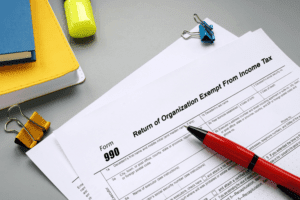
Think about who your target customer is, what they’re looking for in a coffee shop and undertake research of the market and emerging trends. Between 2015 and 2016 sales increased by 10.4% – the biggest year-on-year boost witnessed in the last five years. Ultimately, whether you choose to offer Wi-Fi should be a business decision based on your customers’ wants and needs. When selecting a location, make it close and convenient for the types of customers your coffee shop will draw. For example, a drive-thru coffee stand might cost less than a full coffee bar. A bakery & café may cost much more than a small mobile coffee business.
Restaurant Business Plan Template
In April, the UK economy grew by 0.2% thanks to a boost from the nation’s humble hot coffee makers. And, according to an economic report by UKHospitality, the sector has the potential to increase its contribution to create half a million new jobs by 2027. In recent years, the UK had been steadily moving towards the kind of well-established café culture that our European cousins are famous for. These independent brewers have taken a hit due to the ongoing cost of living crisis, but the industry is readying for growth and recovery in 2024. Developing a unique identity is, therefore, crucial – give consumers a reason to choose your establishment over a generic high-street café by pushing your independent credentials. Coffee shops are big business, and consumers are constantly on the hunt for the intimacy only an independent provider can offer.

Developing your coffee business concept

This means that the owners are not personally responsible for the debts and liabilities of the business. The disadvantage is that C Corporations are subject to double taxation. This means that the corporation pays taxes on its profits, and the shareholders also pay taxes on their dividends. With proper planning, execution and hard work, you can enjoy great success. Below you will learn the keys to launching a successful coffee shop.

Should I Start an LLC for My Coffee Shop?
Here’s where that comes in because the location can only do so much work for you. The work you do to design the cafe on the inside will also greatly matter. These seven steps will take you through everything you need to know. Our partners cannot pay us to guarantee favorable reviews of their products or services. Take time to write a job description that reflects your business and what you offer a prospective applicant. With an inventory management system, you can track what you have in stock at all times.
Do you want to offer privacy to appeal to people doing work or holding meetings? Either way, consider the size of your space and how you can maximize your seating. Creating an optimal design for both your front- and back-of-house areas is essential for both your efficiency and your customers’ comfort. We’ll break down how you should get started designing the layouts you’re going to use in your new cafe.
What are the requirements to start a coffee shop?
Inquire how the coffee is stored—as heat and humidity can damage the flavor and quality. Look for a coffee roaster that offers a wide variety of coffee bean options and falls in alignment with the vision of your café. Finding a cozy coffee space is just one necessary component to an exceptional café experience but, unfortunately, not all commercial spaces will be able to accommodate more than that.
- Look at other “anchor” businesses, living spaces, and organizations like other restaurants, apartment buildings, dorm rooms, colleges, and office buildings.
- The calculation establishes how much coffee you need to sell to turn a profit.
- While the big coffee chains have expanded, so have specialty, independently run shops.
- You should consider using words related to coffee or something that embodies the vibe of your café.
- Whether you opt for a card that’s stamped per purchase, or a digital app that allows customers to collect points, loyalty programmes are a key part of marketing a café or coffee shop.
- ” You want your brand to activate their senses so they will automatically anticipate the full experience before they even walk through the door.
- This is not necessarily bad, as competition often drives businesses to improve.
You can also incorporate personal touches such as using your last name or something sentimental. Although not required by law in most states, having an operating agreement is highly recommended for all LLCs. This document outlines how your business will be run and managed including ownership percentages, profit distribution plans, and procedures for resolving member disputes. The next step is filing articles of organization with the proper state agency (usually the Secretary of State) and paying the required fee. This document includes basic information about your LLC, including its name, address, registered agent, and purpose. Furthermore, owners have more control over their business operations without worrying about being held personally liable for any decisions made.
How profitable is a coffee shop?
They sound great in theory, but remember that a majority of people brew their coffee at home, only going out occasionally. It’s unwise to limit your audience to only the people who live in a specific building and bank on them to come down every day. A limited liability company, or LLC, is a type of business entity that provides limited liability to its owners. This means that coffee shop accounting the owners of an LLC are not personally responsible for the debts and liabilities of the business. The advantages of an LLC for a coffee shop include flexibility in management, pass-through taxation (avoids double taxation as explained below), and limited personal liability. The disadvantages of an LLC include lack of availability in some states and self-employment taxes.
- From a marketing perspective, your first impression determines who will become your customers.
- It’s a good idea to research other coffee shops in the area to see if they compete with the products and services you provide.
- It might not be the most exciting or glamorous, but it is vital to making sure your employees feel equipped to do their jobs and consistently give great experiences to customers.
- If you love coffee and are looking for a business opportunity, this is your guide to starting a coffee shop and making it a success.
- Keep your menu fresh and innovative, and consider seasonal promotions or limited-time offerings to entice new customers.
Furniture Costs
This includes things like making sure there’s enough counter space for baristas to make drinks and ensuring that shelves are at a comfortable height for stocking and retrieving items. By taking all of these factors into consideration, you can create a https://www.bookstime.com/ floor plan that works well for both your customers and your staff. An effective coffee shop floor plan lives on the delicate balance between getting people who want to grab-and-go through efficiently and being inviting to those who prefer to linger.
You’ll also want to outline the pricing of your products, what goods you want to offer, the type of coffee shop you want to have (sit-down, drive-through), and more. It’s a lot to think about, but a business plan is where you can get all of these plans down in one place. Beyond that, if you’ll need outside capital to make your coffee shop dreams a reality, you’ll need to provide a business plan for funding consideration. Finally, you’ll need to consider ergonomics when creating your floor plan.





